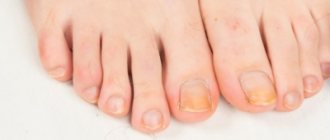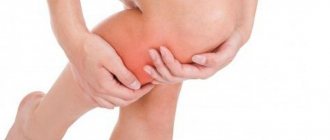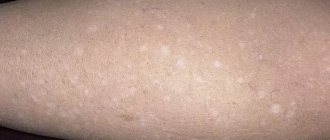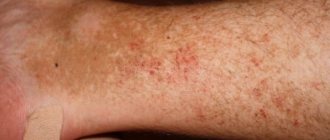Trophic ulcer is the most common complication of varicose veins, which manifests itself as a defect in the skin and subcutaneous tissue. In ICD 10, the disease does not have a code, since it is a collective term. Phlebologists at the Yusupov Hospital use all modern ultrasound diagnostic techniques known today, multislice computed tomography and magnetic resonance imaging to determine the cause of the disease.
Which doctor treats trophic ulcers of the lower extremities? Trophic ulcers are treated at the Yusupov Hospital by vascular surgeons or phlebologists. These are specialists of the highest qualification category who have been trained in leading Russian and European centers of vascular surgery. They are fluent in the techniques of all modern surgical interventions that are performed for trophic leg ulcers.
Trophic ulcers on the legs and their treatment, general concepts:
A trophic ulcer is not a disease, but a complication of varicose veins and atherosclerosis. Poorly cured, advanced stage of the disease (chronic wound).
To put it simply, this is a circulatory disorder due to diabetes, varicose veins, thrombophlebitis, which ultimately leads to stagnation in blood vessels, drying out of the skin and tissues.
In turn, this leads to even greater disruption of blood circulation: pus accumulates, tissue poisoning occurs, an ulcer forms, and then gangrene.
The picture is sad; a sick person needs to be attentive to himself. Carefully monitor the thinnest places on the human body: the bottom of the lower leg, the heel area, the ankle to the calf, the wrist.
These places are characterized by the fact that only tendons, connective tissue, and ligaments are located here. There are no muscles. There is no one to push the lymph.
If you notice redness, altered, narrowed, impaired sensitivity of the skin and it is cold, seek treatment immediately. It is in such places that a trophic ulcer forms.
They appear when the body tissues are not properly nourished. They have a chronic course, with very frequent exacerbations.
Prevention
The main preventive measure to prevent the occurrence of a trophic ulcer is the immediate treatment of primary diseases (circulatory disorders and lymph outflow).
It is necessary not only to use medications internally, but also to apply them externally. Local exposure will help stop pathological processes, treat existing ulcers and prevent subsequent tissue destruction.
It is important to remember that ulcerative lesions appear in diseases of the arteries and damage to the venous structure. For varicose veins, when the patient refuses surgical intervention, it is recommended to wear compression garments, which are selected individually. It is strongly recommended for patients to reduce the load on their legs, monitor their weight, if possible, avoid working in hazardous industries (hot workshops), adhere to a strict diet and avoid injury to tissues that are susceptible to ulceration.
The main rule is to consult a doctor in a timely manner if health problems arise. After surgery, to avoid relapses, it is important to adhere to the following recommendations:
- annual spa treatment in sanatoriums of the appropriate profile;
- healthy lifestyle, balanced diet and body weight control;
- exclusion of prolonged static loads, hypothermia of the legs;
- regular use of therapeutic knitwear and elastic bandage, especially when walking;
- constant monitoring of blood glucose levels in diabetes mellitus;
- using comfortable shoes, crutches and walking sticks to reduce the load on the feet;
- a course of taking vitamin and mineral complexes recommended by a doctor to strengthen the immune system, antithrombotic agents.
Ulcers form as severe complications of advanced diseases. They progress steadily, are resistant to therapy and often recur. Only some varieties in the initial stages of development can be treated with therapeutic methods. It is impossible to cure at home without resorting to medical help.
The prognosis depends on timely treatment, careful implementation of medical recommendations and treatment of the underlying disease against which the ulcer appeared.
Causes of the formation of trophic ulcers on the legs and their treatment:
As mentioned above, this is impaired blood flow in some diseases:
- Varicose veins (areas of increased venous pressure).
- Blockage of veins (thrombophlebitis).
- Low supply of oxygen and nutrition with obliterating endarteritis.
- Patients with diabetes suffer (nutrients are no longer absorbed by the tissues).
- Burns, frostbite (damage to nerve endings occurs).
- Heredity.
- Hypertension.
Stages of development
Before damage to the lower extremities becomes more pronounced, it is preceded by signs of the disease, which gradually intensify.
Trophic ulcers form in several stages:
- The first stage of pathology formation . The patient has initial symptoms - red spots on the lower extremities, which intensively peel off. Gradually, the spots begin to provoke itching and discomfort.
- The second stage of pathology progression. Instead of red spots, the patient develops wounds that have a dark tint. On the surface of the wounds, ichor is visible, which slows down healing. The patient begins to complain of deterioration in health, increased body temperature and fever. Intoxication can also be diagnosed.
- Third stage of defeat. The wounds begin to intensively secrete pus. The lesion increases in size and becomes regular in shape. The ulcers also progress deeper into the leg, causing severe pain. The patient experiences the emergence of new lesions.
If treatment is not started, this situation can provoke sepsis
Trophic ulcers on the legs, their types and varieties:
Venous: the cause is varicose veins. The most intractable ulcers form in people after 45, possibly earlier.
As a rule, there are a sufficient number of chronic diseases: various tumors, common heart diseases are exacerbated, lymphostasis, oncology
Diabetic: The culprit is diabetes.
Arterial: high pressure, damage to the walls of blood vessels - the cause of ulcers.
Oncological: development of a bad tumor, metastases.
Infectious: infection attaching to any wound, scratch on the legs or in any vulnerable places of a person.
Pressure sores: form in severe, immobile patients.
Martorella's ulcer
This ulcer is also called hypertensive, as it occurs due to prolonged vasospasm. It occurs very rarely, mainly in mature and elderly women. At the initial stage, the disease manifests itself as swelling, pain, and a burgundy spot appears on the front of the lower leg, which soon turns into an ulcer. The disease develops very slowly and is characterized by extreme pain, which haunts both day and night
Martorella ulcer on the leg
The main difference between a hypertensive ulcer is the symmetry of its manifestation. Papules and ulcerations appear simultaneously in the same places on both legs.
What are trophic ulcers on the legs and their treatment:
Often ulcers form on the lower third of the leg. This is where the thinnest layer of muscle is. Due to impact or stretching, the skin is damaged. Stagnation of blood and ulcers occur.
They are all different in shape and size.
- The skin is dark, the appearance of compaction, soreness.
- Dryness, eczema of the skin.
- With any violation of the skin (scratched, bitten by a mosquito), an infection occurs and an ulcer develops.
- Its bottom is smooth.
- The edges, on the contrary, are uneven, undermined, slightly protruding above the skin.
- The tissues affected by the ulcer are pale with a gray coating and a bluish tint.
- The liquid coming out of it is scanty, becomes abundant over time, and has a putrid odor.
- All the skin around the ulcer is inflamed, and after a while it will have a brown tint.
- Due to impaired blood circulation in the leg, it is swollen, bluish, cold, and constantly freezing.
- A burning sensation, pain, constant bandages, and the inability to wear nice shoes will drive any woman to nervous exhaustion.
Course and symptoms
After the blood supply to the affected area has deteriorated, the first symptoms of a future ulcer begin to appear: swelling, itching, burning and a feeling of heaviness in the legs. All this is accompanied by night cramps. The skin becomes red, hard and shiny, as if it had been varnished. Its sensitivity also worsens and pain appears. Due to the lack of lymph outflow, drops of clear liquid similar to sweat appear on the surface of the edema.
After this, small white spots appear on the surface of the deformed area of skin. Doctors call them white atrophy.
In their place, small ulcers form. The skin around them is usually moist and dark red in color. They can combine with each other, creating a large wound. At the same time, it begins to penetrate deep into the skin, affecting its lower layers, muscles, tendons and even the surface of the bone (osteomyelitis). At this stage, a secondary infection often occurs. Its symptoms are the appearance of pus and an unpleasant odor.
After washing the wound from pus and keeping it clean for a week, the granularization stage begins. During this process, a thin film is formed that protects the wound from the penetration of pathogenic microorganisms. It consists of inflammatory and connective tissue cells. Its nutrition is carried out using newly formed vessels. The duration of this stage is from 1 month. At the end of it, the color of the wound changes to pink. This means that the healing or epithelialization stage has begun.
Healing of trophic ulcers
New tissue fills the space between the edges of the wound. In place of the latter, after the process is completed, a pale spot remains. It takes on this appearance due to fewer vessels than it had before the lesion. Depending on the quality of treatment and the size of the wound, healing may take several months or years.
Trophic ulcers on the legs and their treatment, recommendations:
Treatment of trophic ulcers is a very serious, long, and dreary task. It takes a lot of patience and strength from the patient and the doctor. Don't turn your life into existence, treat veins and diabetes on time.
- Include more living food in your menu: greens, vegetables, fresh fruits.
- Drastically reduce flour, sweets, and fast carbohydrates.
- Avoid spicy foods: vinegar, mustard, pepper (try to remove all spices).
- When the illness worsens, rest is needed. For a sore limb, periodic warm-up is necessary (bend and straighten it while lying down, raise and lower the leg, make circular movements with the hip joint).
- Warm-up is necessary to improve blood movement - blood delivers nutrition to tissues.
- Change your regular shoes to orthopedic ones to ease the load on the affected area.
- Treat the main diseases on time, do not wait for complications - trophic ulcers.
What will an untreated trophic ulcer on the legs lead to:
- The process will become chronic, changes in tissues will be irreversible.
- An open sore that causes persistent infections.
- Erysipelas (once it occurs, it is impossible to get rid of it). The swelling increases with each exacerbation.
- Elephantiasis, huge ulcers.
- Degeneration of tissues into cancer cells. The person becomes disabled.
Diagnostics
Diagnosis is carried out immediately after the patient consults a doctor with certain complaints. First of all, a visual inspection is carried out.
Then the patient is referred to diagnostic methods, which are as follows:
- urine and blood analysis;
- blood test from the affected area;
- immunological study.
Additional studies may also be prescribed, such as:
- vascular angiography using a contrast agent;
- ultrasound examination of blood vessels.
Together, these studies help to form a complete picture of the patient’s condition.
Trophic ulcers on the legs and their treatment with traditional methods:
- First, the ulcer needs to be cleaned.
- Heal.
Rules for treating ulcers:
Treating the edges of the wound with brilliant green, iodine known to us (in alcohol).
- We wash the ulcer with hydrogen peroxide, the well-known furatsilin, prepared with a pinkish solution of potassium permanganate.
- For wounds to heal, medicinal gels are used, then ointments (for example, solcoseryl). First apply the gel 3 times a day. In the future, ointments are used 2 times a day.
- Medicine has modern, ready-made dressings that draw out all the rot from wounds, releasing antiseptic into the wound and various healing elements. They are not removed until four days. They do not stick to the wound.
- After cleaning the ulcer, other dressings are used to restore the skin. For example, waxpran bandages.
Ointment with baby soap:
We take:
- A glass of milk.
- A glass of sugar.
- Grate half a bar of baby soap.
- Boil the mixed mixture over low heat and stir.
- After two minutes, cool.
- Add a tube of heparin ointment and mix everything.
- We always use warm ointment in a dose of a tablespoon.
- The ointment applied to a napkin is tied to the ulcer.
- Cover the top with cellophane and cotton wool.
- We keep it for a day.
- Wash off with whey.
- Immediately apply the ointment again.
- Continue this way until the ointment is completely applied.
Vishnevsky ointment – enhanced:
It contains up to 5% medicinal birch tar. You can add another 5% tar to it to enhance its effect.
Just add and thoroughly mix a drop of birch tar to a dose of Vishnevsky ointment and make a compress.
Carrot and onion oil:
Recipe:
- Peel and grate a medium onion.
- Grate and add a small carrot to the onion.
- Mix the mixture, fry until golden brown in 500 grams of unrefined sunflower oil.
- Boil a piece of small foam rubber for at least 10 minutes (according to the size of the ulcer).
- Dip in cooled oil.
- Secure it to the wound with a bactericidal adhesive plaster.
- Bandage.
- One week is enough for treatment.
Potato starch:
- Fry a glass of starch until dark golden in a frying pan.
- In another frying pan, heat a glass of unrefined sunflower oil until it starts to smoke.
- Mix butter and starch in one pan.
- Then heat the mixture for another 10 minutes.
- 2 minutes before this time, add 3 peppermint leaves (can be dry or fresh) to the mixture.
- Cool, apply to the wound on a napkin 1 cm thick.
- Apply cellophane and mesh bandage on top.
- Keep it for a day.
- Wipe the wound with alcohol, vodka, remove all medicine from the surface.
- It will hurt.
- Rest for two hours and apply the compress again for a day.
- Treat until complete healing.
Pharmaceutical ointments for healing:
- Levomikol.
- Levosin.
- Solcoseryl.
Furacilin:
- Wash the wound with furatsilin.
- Then sprinkle streptocide powder on top.
- Drink horse chestnut preparations: aescusan.
- Salt dressings for the night: add a tablespoon of table salt to one liter of boiled water.
- Wrap a napkin soaked in the solution.
- There should be nothing on top except a bandage.
- After drying, apply another bandage.
Ointment mixture:
Pharmacy ointments:
- Sinaflan: 0.025%.
- Methyluracil: 10%.
- Hyoxysone: 0.1%.
- Gentomycin: 0.1%.
- Vanillin for children: 100 grams.
- Streptocide: crush four tablets.
- Mix everything.
- The ulcer heals in 2–3 months.
Homemade ointments:
- Castor oil: 3 bottles.
- Ichthyol ointment: 5 grams.
- Streptocide: crush one tablet.
- Mix everything in an enamel bowl.
- Keep stirring in a water bath until liquid.
- Cool.
- Treat the ulcer with hydrogen peroxide.
- Place a cloth soaked in oil on the wound.
- Bandage.
- Repeat once a day until cured.
Herbs inside:
Take a tablespoon of each of the following herbs.
- Birch buds.
- A series.
- Motherwort.
- Sweet clover.
- Srporysh.
- Agrimony.
- Meadowsweet.
- Burdock root.
- Calendula flowers.
Mix everything. In a thermos overnight, brew only two tablespoons of the prepared herbal mixture with one liter of boiling water.
- In the morning we strain.
- Drink half a cup 3 times a day half an hour before your meals.
Formation mechanism
Trophic ulcers of the lower extremities are localized mainly on the legs and feet.
At first, the patient notices the appearance of a small skin lesion, then it begins to gradually increase, infecting adjacent areas of the skin, tendons and bones.
As for the development mechanism , it depends on the type of ulcer, but in most cases they are similar to each other.
The pathology begins to develop with damage to the blood vessels in a certain area of the legs. As a result, nutrition and oxygen flow to the affected areas of the lower extremities deteriorate. Oxygen starvation can cause the formation of wounds that do not heal and, over time, accumulate purulent masses inside.
After a purulent infection gets under the skin, septic deposits and other inflammations develop. If timely treatment is not carried out, this can lead to amputation.











